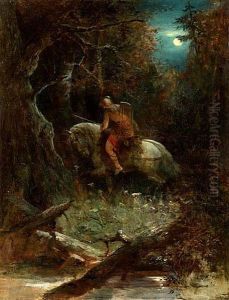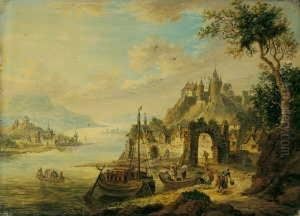Georg Christian Urlaub Paintings
Georg Christian Urlaub was a German painter and engraver, known primarily for his portraits and religious paintings, born in 1749 in Würzburg, Germany. His artistic journey began under the influence of his father, Johann Michael Urlaub, who was also a painter. This familial environment immersed Georg Christian Urlaub in the world of art from a young age, laying the groundwork for his future career. He further honed his skills at the Würzburg Academy, where he was influenced by the Rococo style, prevalent in the region at the time. Urlaub's work is characterized by its intricate detail, vibrant colors, and the emotional depth of its subjects, distinguishing him among his contemporaries in the German art scene of the 18th century.
Throughout his career, Urlaub received commissions from various religious institutions and members of the nobility, which was a testament to his skill and reputation. His religious works often depicted scenes from the Bible and the lives of saints, executed with a deep sense of piety and devotion that resonated with his patrons. Meanwhile, his portraits captured the essence of his subjects with remarkable sensitivity and insight, making them highly sought after. Despite his success, Georg Christian Urlaub's life was relatively short, as he died in 1795 at the age of 46.
Urlaub's legacy, while not as widely recognized as that of some of his contemporaries, remains significant in the study of German Rococo art. His contributions to religious and portrait painting have been appreciated by art historians and collectors alike, with his works preserved in various museums and private collections across Germany. Although detailed records of his life are somewhat scarce, Georg Christian Urlaub is remembered as a talented artist who reflected the spiritual and aesthetic values of his time through his meticulous and heartfelt work.

